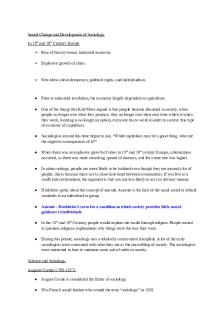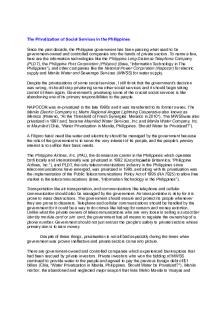Rates Of change in the natural and social sciences PDF

| Title | Rates Of change in the natural and social sciences |
|---|---|
| Course | Analytic Geometry And Calculus I |
| Institution | Kent State University |
| Pages | 1 |
| File Size | 32.4 KB |
| File Type | |
| Total Downloads | 10 |
| Total Views | 157 |
Summary
Rates of change in the natural and social sciences. ...
Description
MATH 12002 — RATES OF CHANGE IN THE NATURAL AND SOCIAL SCIENCES — SECTION 3.4 1. A particle moves according to a law of motion s(t) = t3 − 9t2 + 15t + 10, t ≥ 0, where t is measured in seconds and s in feet. (a) Find the velocity at time t. (b) Find the velocity after 3 seconds. (c) When is the particle at rest? (d) When is the particle moving in a positive direction? (e) Find the total distance traveled during the first 8 seconds.
2. If a ball is thrown vertically upward with a velocity of 80 ft/s, then its height after t seconds is s(t) = 80t − 16t2 . (a) What is the maximum height reached by the ball? (b) What is the velocity of the ball when it is 96 ft above the ground on its way up? On its way down?
3. A stone is dropped into a lake, creating a circular ripple that travels outward at a speed of 60 cm/s. Find the rate at which the area within the circle is increasing after (a) 1 sec, (b) 3 sec, and (c) 5 sec. What can you conclude?
4. Newton’s Law of Gravitation says that the magnitude F of the force exerted by a body of mass m on a body of mass M is GmM F = r2 where G is the gravitational constant and r is the distance between the bodies. (a) If the bodies are moving, find
dF dr
and explain its meaning.
(b) Suppose it is known that Earth attracts an object with a force that decreases at the rate of 2 N/km when r = 20,000 km. How fast does this force change when r = 10,000 km?
HOMEWORK – page 167–169: 1-7 odd, 13, 27...
Similar Free PDFs

Objectivity in Social Sciences
- 10 Pages

Models of Social Change
- 8 Pages

Factors of Social Change
- 4 Pages

Sociology AND Other Social Sciences
- 11 Pages

FAIRCLOUGH Discourse and Social Change
- 135 Pages
Popular Institutions
- Tinajero National High School - Annex
- Politeknik Caltex Riau
- Yokohama City University
- SGT University
- University of Al-Qadisiyah
- Divine Word College of Vigan
- Techniek College Rotterdam
- Universidade de Santiago
- Universiti Teknologi MARA Cawangan Johor Kampus Pasir Gudang
- Poltekkes Kemenkes Yogyakarta
- Baguio City National High School
- Colegio san marcos
- preparatoria uno
- Centro de Bachillerato Tecnológico Industrial y de Servicios No. 107
- Dalian Maritime University
- Quang Trung Secondary School
- Colegio Tecnológico en Informática
- Corporación Regional de Educación Superior
- Grupo CEDVA
- Dar Al Uloom University
- Centro de Estudios Preuniversitarios de la Universidad Nacional de Ingeniería
- 上智大学
- Aakash International School, Nuna Majara
- San Felipe Neri Catholic School
- Kang Chiao International School - New Taipei City
- Misamis Occidental National High School
- Institución Educativa Escuela Normal Juan Ladrilleros
- Kolehiyo ng Pantukan
- Batanes State College
- Instituto Continental
- Sekolah Menengah Kejuruan Kesehatan Kaltara (Tarakan)
- Colegio de La Inmaculada Concepcion - Cebu










